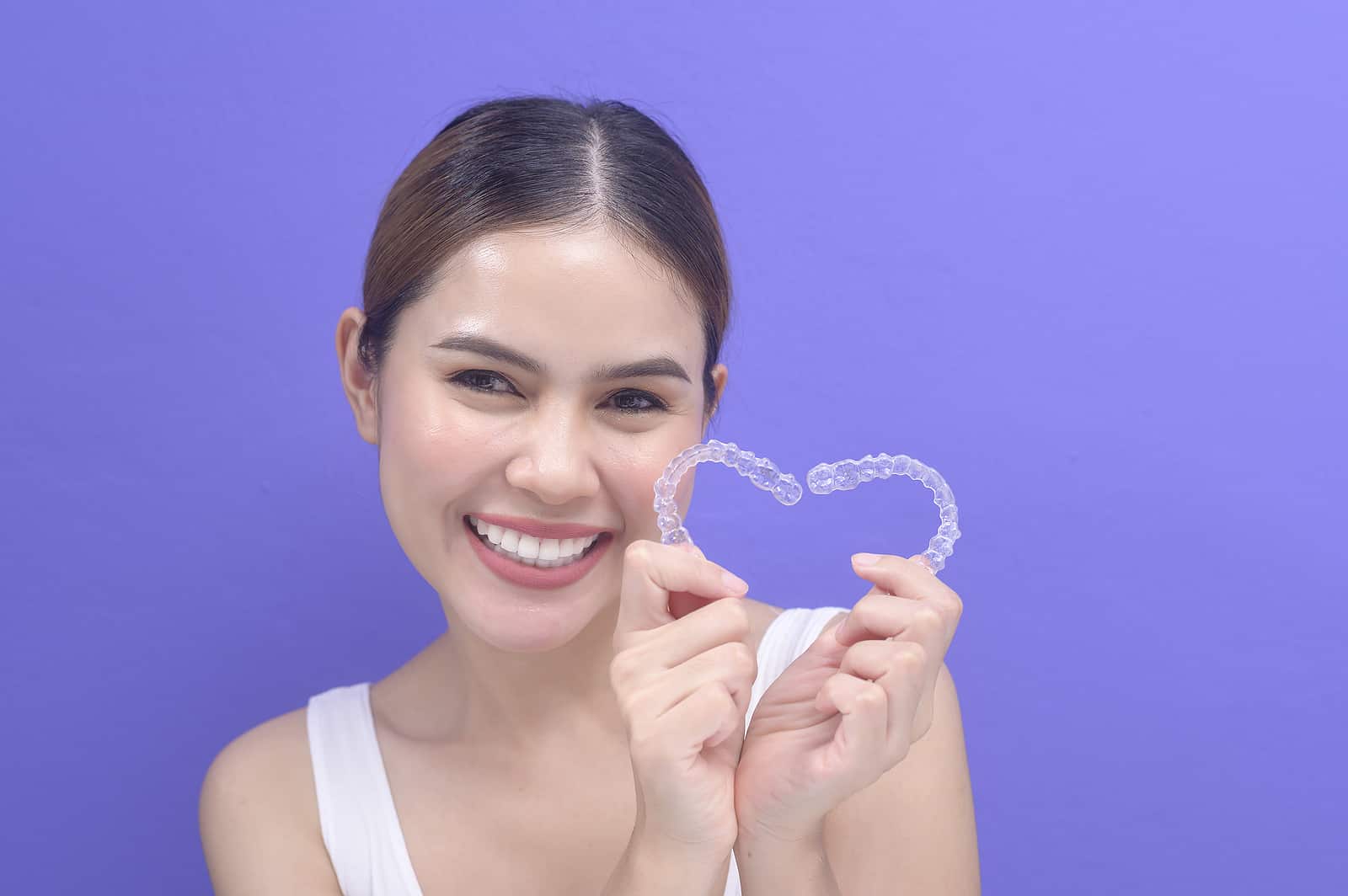Fortunately, today’s brace designs have adapted to patients’ everyday needs. Not only are both removable and fixed appliances more comfortable, but they’re also more discreet, and the complete result is achieved in less time than a decade ago.
Despite traditional fixed metal braces getting a bad rep in the past, they’re still around today. Whilst their design might not have been too appealing to patients, the mechanics that they employ to correct a poor bite and poor alignment are second to none.
Whilst it’s true that fixed braces are less clunky than in the past and remain highly effective, if appearances matter a great deal to you, you may wish to consider a removable and transparent set of aligners for teeth straightening – most specifically, the Invisalign clear aligner system.
It’s important to remember that if you’re looking to make significant alterations to how your teeth sit in your mouth, your treatment journey could last in excess of 12 months. With this in mind, it’s important to choose a teeth straightening system that will fit your lifestyle in the long term.
Fixed braces: The Who, Why, and How
Fixed braces remain in your mouth for the entirety of the treatment journey.
Who are traditional fixed braces for?
Traditional fixed braces are most suited to patients in need of moderate to significant changes to the structure of their teeth – they are primarily used to correct functional issues as opposed to cosmetic issues.
We also recommend fixed braces for patients who might struggle with remembering to re-insert their Invisalign aligners after eating and brushing. Failing to exercise discipline with this could incur extra treatment time and a less predictable result.
Why choose traditional fixed braces?
The fixed braces designs of today move teeth in virtually the same way they did multiple decades ago. This goes to show just how reliable they are in the eyes of dentists and orthodontists.
From a design point of view, the hardware, such as the wires and brackets, is more compact and unobtrusive than in the past. However, if you’re worried about them being a little conspicuous, we offer cosmetic fixed braces. These have ceramic brackets which closely resemble the appearance of tooth enamel and tooth-coloured wires, which blend in with your tooth shade.
How do traditional fixed braces move my teeth?
To understand how braces move your teeth, it’s important to start with breaking down the individual elements, which are:
Brackets: the most visible part of the brace, made from either metal or ceramic. These are carefully bonded to each individual tooth, to make sure they stay firmly in place throughout.
Archwires: the metal archwires are threaded through each bracket and create pressure against your teeth.
Ligatures/elastic bands: these secure the bracket onto the archwire. They are changed at each appointment (roughly every 6 weeks) and apply push and pull forces.
These components work together to guide your teeth into the optimal positions your orthodontist expects. Your braces induce a biomechanical process called bone remodelling, which strengthens the bone in response to the load-bearing energy the braces have applied to your teeth. Once this energy is no longer present, your bones return to pre-treatment levels of inactivity, which is why the process needs to be repeated over a long period and a retainer is required post-treatment to stop this from occurring.

Invisalign: The Who, Why, and How
Invisalign is an aligner system composed of bespoke removable aligners that are changed over every 2 weeks by the patients at home.
Who is Invisalign for?
Invisalign is suitable for correcting less complex problems than a fixed brace might address. It can also be used as a more cosmetic-orientated system, correcting spacing, crowding and misalignment with your front teeth.
If you would like the flexibility to keep eating and brushing as normal during your treatment, we recommend Invisalign. You will have the option of removing the aligners for up to 2 hours each day. However, you must be prepared to be disciplined with doing so, as you could stall your treatment.
If we find you have severe bite problems, it may be that Invisalign treatment is closed off to you.
How does Invisalign move my teeth?
Unlike traditional fixed braces, Invisalign aligners don’t apply continuous pressure to your teeth.
Each Invisalign aligner is created in anticipation of the movements your teeth will go through during the average 12-month treatment time. This means you won’t have to visit your orthodontist as regularly as if you were to get fixed braces, as you change the aligners over yourself at home every 2 weeks. Once you have used an aligner, it is then redundant, as your teeth will have moved out of that particular position in the treatment sequence.
A new aligner will take up the mantle, and this process is repeated until the desired result is achieved.
Why choose traditional Invisalign?
The technology that projects the movements your teeth will go through, and the predicted outcome is state-of-the-art and, therefore incredibly accurate. You will even be able to download the Invisalign app to track your teeth’s progress.
The freedom to eat and brush normally is something our patients never take for granted during their Invisalign treatment. They often tell us they can’t believe it’s possible to change the anatomy of their teeth without having these everyday freedoms becoming inhibited.
What’s more, the transparent plastic used to create the aligners means they’re hardly visible to the outside world.
Contact One80 Dental for Specialist orthodontic treatment
Contact our dental practice in Sheffield for Specialist-led orthodontic treatment, carried out by Tania Murphy, who is recognised by the GCD and holds a Fellowship in Dental Surgery (Orthodontics) from the Royal College of Surgeons England.








